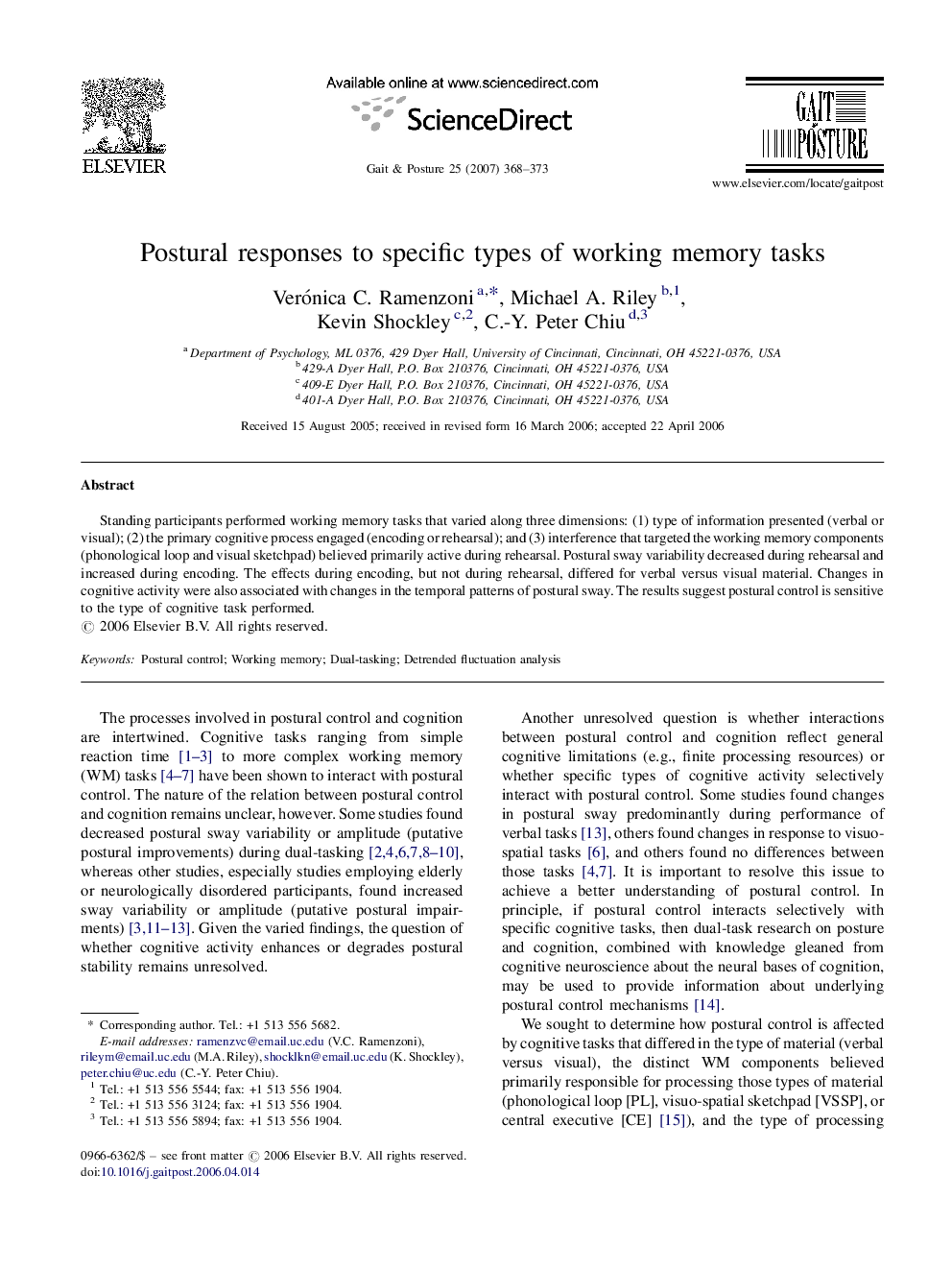| Article ID | Journal | Published Year | Pages | File Type |
|---|---|---|---|---|
| 4058214 | Gait & Posture | 2007 | 6 Pages |
Abstract
Standing participants performed working memory tasks that varied along three dimensions: (1) type of information presented (verbal or visual); (2) the primary cognitive process engaged (encoding or rehearsal); and (3) interference that targeted the working memory components (phonological loop and visual sketchpad) believed primarily active during rehearsal. Postural sway variability decreased during rehearsal and increased during encoding. The effects during encoding, but not during rehearsal, differed for verbal versus visual material. Changes in cognitive activity were also associated with changes in the temporal patterns of postural sway. The results suggest postural control is sensitive to the type of cognitive task performed.
Related Topics
Health Sciences
Medicine and Dentistry
Orthopedics, Sports Medicine and Rehabilitation
Authors
Verónica C. Ramenzoni, Michael A. Riley, Kevin Shockley, C.-Y. Peter Chiu,
